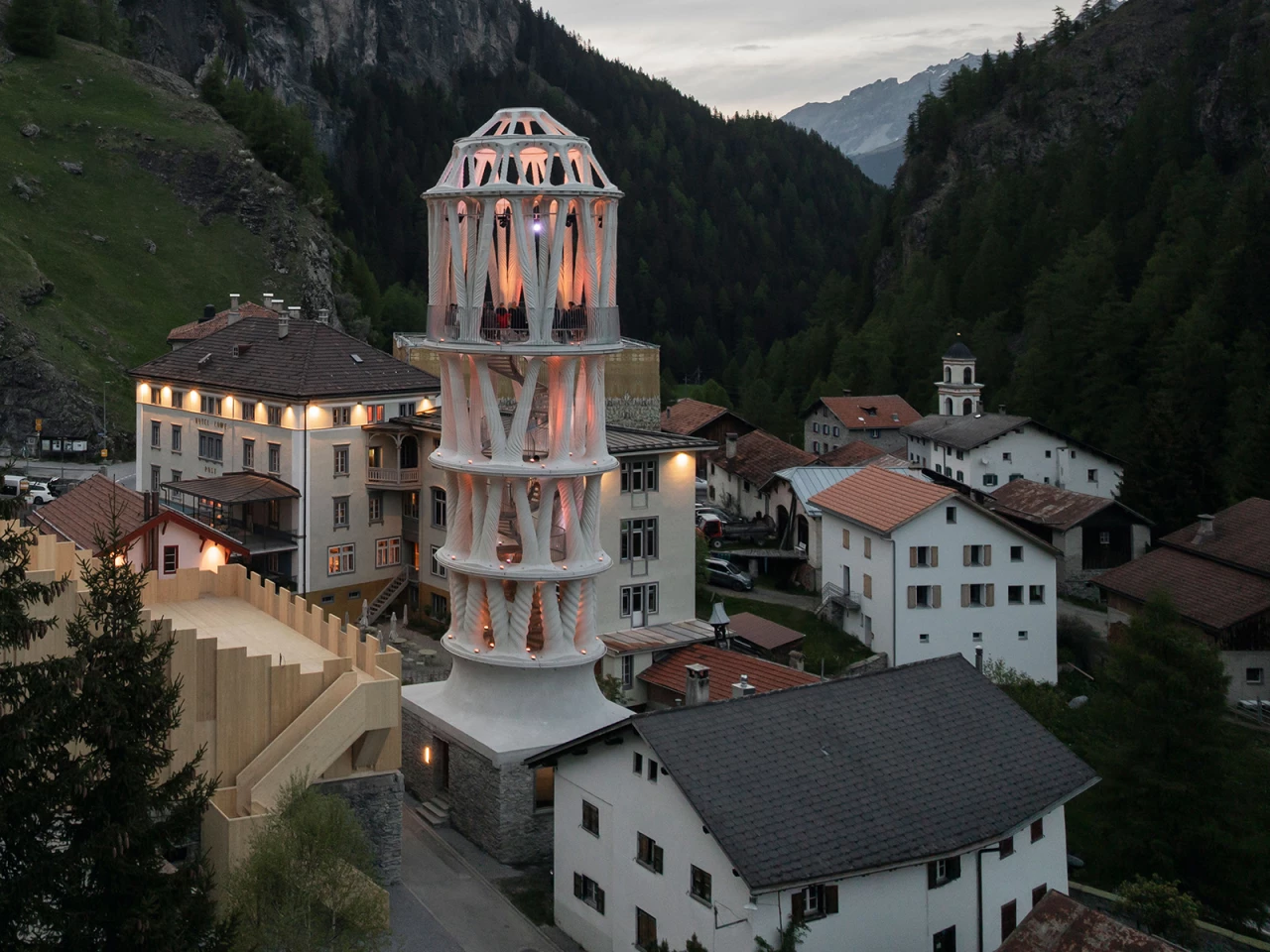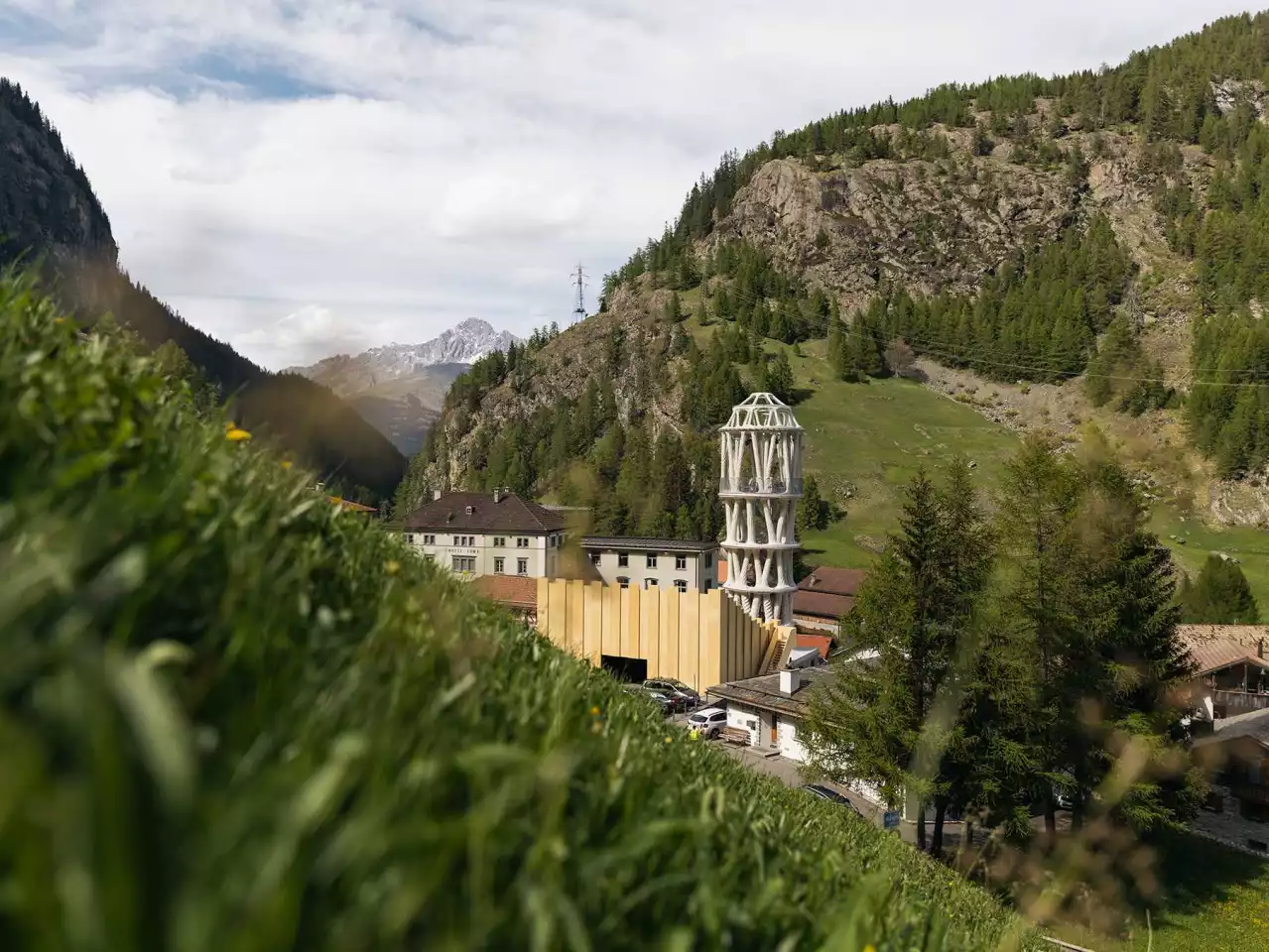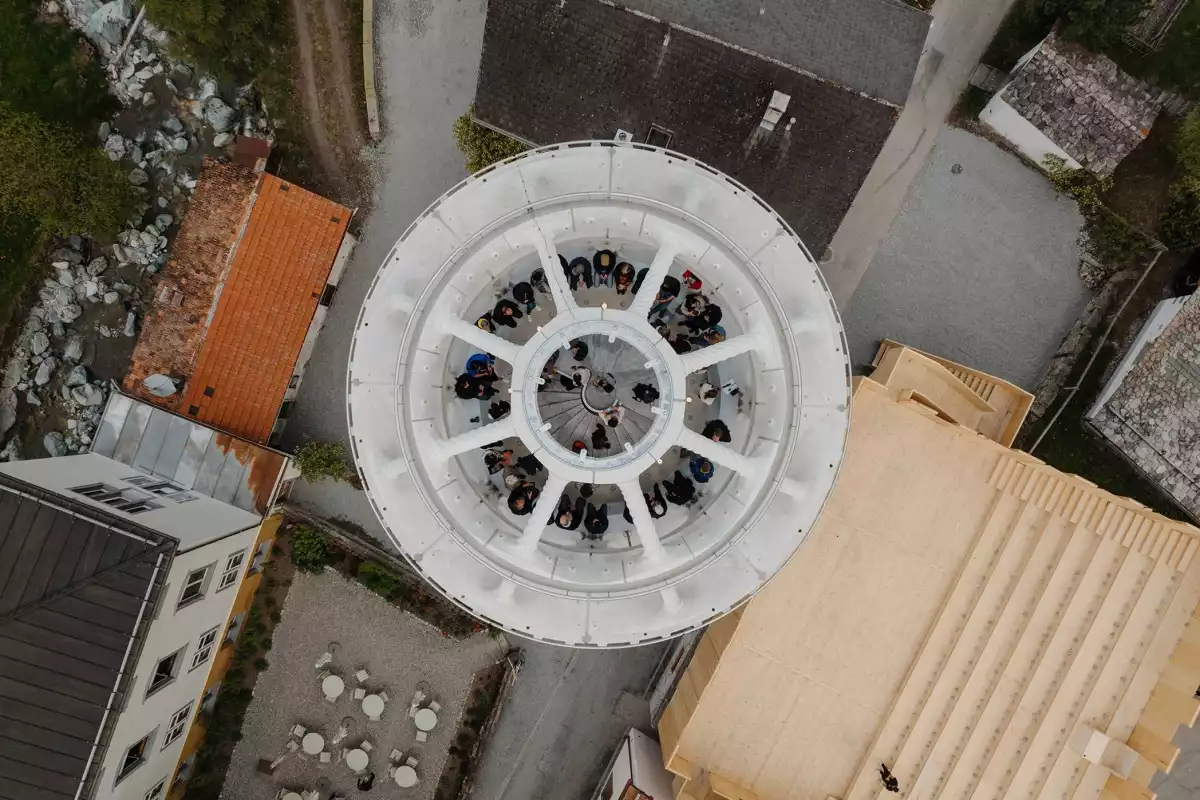Likened by its creators to an "ornate layered cake," the Tor Alva has been completed in Switzerland. Hailed as the world's tallest 3D-printed building, this remarkable structure rises to an impressive height of 30 m (98.5 ft).
Tor Alva (aka White Tower) is located in the small alpine village of Mulegns that's currently home to just 11 people. It was created by researchers at ETH Zurich, in collaboration with cultural foundation Fundaziun Origen, to show off the capabilities of cutting-edge 3D-printing techniques.
Architect Michael Hansmeyer and ETH Professor of Digital Building Technologies Benjamin Dillenburger designed its actual form, which consists of an intricate structure of 32 white concrete columns that rise over four floors and taper before fanning out to top out with a dome. The interior, meanwhile, has a capacity for 32 visitors and includes stairs on each floor, with a performance space at the top.

The build process took around five months – or around 900 hours of actual printing – which was carried out in sections before being delivered to Mulegns and assembled on top of an existing building. It involved two construction robots: a 3D printer extruding a special cement-like mixture in layers and a machine used to add steel reinforcement.
"Simple one- or two-story houses produced by additive manufacture are nothing new," says ETH Zurich. "What's special about Tor Alva is that the 3D-printed elements are load-bearing. This breakthrough was achieved through collaboration between Dillenburger's research group and ETH professors Kaufmann and Flatt – together with the ETH spin-off Mesh and construction company Zindel United.

"During the fabrication process, a second robot inserts a ring-shaped steel reinforcement element into the growing column after each 26 centimeters [10 inches] of height. The addition of these rebars makes it possible to produce complex, branched columns that would be difficult to realize using a conventional concrete-casting process."
Now that the tower is complete, Tor Alva will be open for guided tours, while from July it will also host staged performances on its uppermost floor. The idea is for it to remain in place for around five years, and it has been designed so that it can be dismantled and moved elsewhere with relative ease.
Sources: ETH Zurich, Tor Alva






